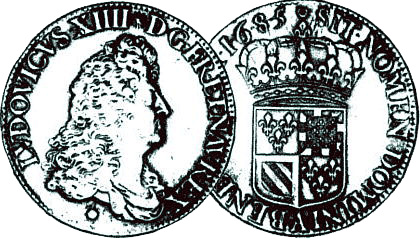Collection of ancient coins - evidence of history
It is difficult to convey what is going through a collector of ancient coins, which found, after a long search for the desired value. Coin collecting hobby is akin to painting, an art that collecting coins - this is another step in the history, knowledge of public relations, ethnography.
And really, which of numismatists, before you put a coin in the sacred place, do not know about it all that you can learn from history, and incidentally of the geography or political economy. Therefore, supply of encyclopedic knowledge numismatist proportional to the amount passed through his hands since their coins and collecting.
Coin - is primarily a story, multi-faceted, many centuries. Numismatists with experience will tell you why the project failed reform SJ Witte, the conversion of the ruble in the manner of the franc in the "Russian" ("Rus" - the name has not appeared in Russia a new monetary unit), explain who should be regarded as pioneers of the Azores - the Carthaginians and Spaniards, the rights of a Herodotus, who saw the Medes first coin engravers or preferable to the attention of Strabo.
 |
Flanders 17th century coins |
Do you know numismatists that the Flemish coins of the XIII century was depicted an executioner with the ax, which lay at the feet of a severed hand. This is evidence of medieval cruelty law in the fight against counterfeiters. In short, the interests of the collectors are not limited to the study of the weight of metal, the image of the coin. Which of the numismatists, hoping to become the owner of the ruble Constantine did not recall the dense ranks of the rebel guards at the Senate Square in December 1825.
The coins brought us not only the names of kings, chieftains and emperors, but also poets, historians, and physicians. Clothing the heyday of ancient Greece was studied by the Greek coins. French barbers hair back Roman Empress Faustina the fashionable Parisian ladies. Long time since there are not many monuments of culture, but their image was told to the present day coins. What were the pillars in the temple of Artemis at Ephesus, told the small coin circles.
Of the coins, we know, in honor of whose victories created Nike of Samothrace. On them we saw the she-wolf suckled Romulus and Remus. What is the Delphic tripod, we also learned from the antique coins. Coins - obktivnye witness history! As it can be judged from the wealth of the state of economic relations, the wars, victories and defeats ...
Long, long ago the original type of coin has attracted some inquisitive person. He not only considered it from all sides, and carefully placed it in a box, and perhaps a jug or a box. And he did not do it for the value of the coin, but because of a sudden broke out of interest in it, to an unusual or cleverly made the image.
History has not preserved his name, but he lived, no doubt, a very long time ago, before our era, when an intensive exchange and trade in the Mediterranean basin and other centers of world culture allows us to see how different small share equivalents - coins in different cities, states. Especially it should be attributed to the ancient society, where due to an early class stratification in the hands of slave-owning aristocracy moved large sums of money, and she thanks the wealth got a lot of free time. Art of Ancient Greece and Rome left behind thousands of original, not dissimilar coins.
In 1965 the museum in the Hungarian city of Debrecen received a "gift" from an unknown ancient numismatist 273 silver Roman coins. It was not a treasure and carefully selected collection, which was held the Millennium, to talk about the noble passion of the unknown collector. In hoards, as a rule, find the set of coins of the same period the year, picture. Here we are dealing with a selection of coins over the years, covering a considerable period of time.
Preserved eyewitness accounts of how the Roman Emperor Augustus, wanting to encourage a close, distributed in various occasions ancient and foreign coins. It is unlikely that it would have a special meaning, if the collecting of coins of the Roman nobility was common.
At the beginning of the Renaissance, when Italian masters resurrected on ancient models clever coinage in Italy resurfaced collectors. The famous poet Petrarch was the owner of a very large collection of coins, of which he presented to Emperor Charles I. In the XVI century, Cardinal Martikuzi collected about 1,000 antique gold coins. Well-known numismatic collection of princely house had d'Este. In Basel, collecting coins engaged Amerbah Professor Izelin. Only in the Netherlands by the end of the XVI century there were 200 numismatic cabinets.